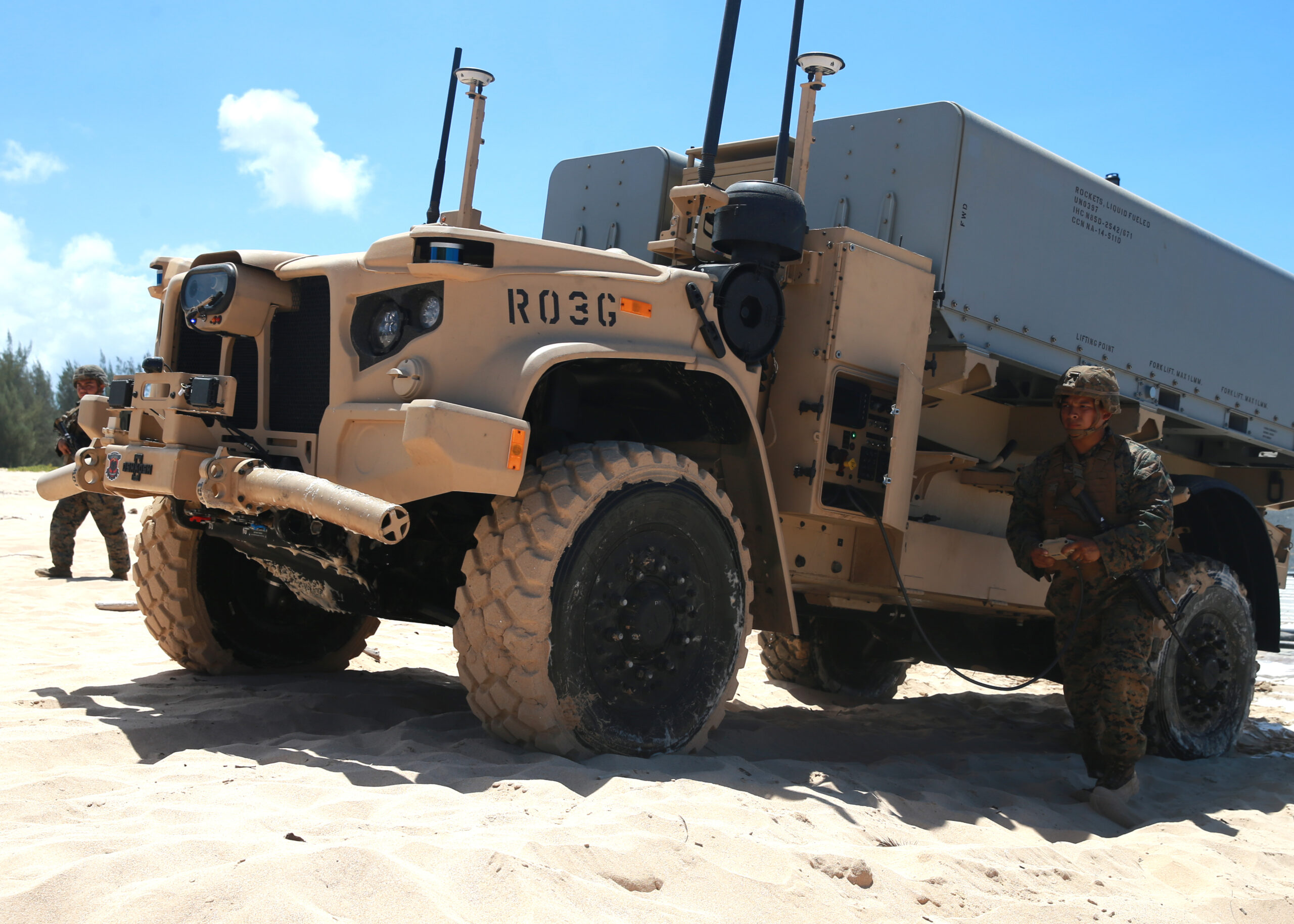
An artillery Marine from 1st Battalion, 12th Marines maneuvers a Navy Marine Expeditionary Ship Interdiction System launcher across the beach aboard Pacific Missile Range Facility Barking Sands during Large Scale Exercise 2021. (U.S. Marine Corps photo by Cpl. Luke Cohen, released)
WASHINGTON: The Marine Corps this week announced it successfully tested its new anti-ship missile system during the Navy’s Large Scale Exercise 2021, successfully hitting a decommissioned vessel off the coast of Kauai in Hawaii.
The Navy Marine Expeditionary Ship Interdiction System, more cleverly known as NMESIS, is a ground-based, anti-ship capability that was developed quickly over the past two years by combining elements of other programs of record, such as the chassis of the Joint Lightweight Tactical Vehicle and the fire control system from the Naval Strike Missile. In essence, it’ll be a remotely operated ground vehicle capable of engaging enemy ships at sea from the coast.
Large Scale Exercise 2021 is the Navy’s wide-ranging operational exercise being conducting this summer to test out its newest operational concepts, including the Marine Corps’ expeditionary advanced base operations concept.
In Hawaii, the service twice fired and successfully hit a decommissioned ship with NMESIS, as well as practiced loading and unloading the system aboard C-130 aircraft and Landing Craft Air Cushions, Joe McPherson, program manager for long range fires at Marine Corps Systems Command, told reporters during a Tuesday roundtable. The events were executed by Marines from Marine Corps Forces Pacific.
The first production units of NMESIS, which the Marines plan to buy this year, will be used for initial operational test and evaluation in 2022, McPherson added. Following those tests, the weapon system will be fielded with the 3rd Marine Littoral Regiment by the end of fiscal 2023.
The successful development and deployment of NMESIS is a crucial element of the commandant’s long-range planning guidance issued, two years ago by Gen. David Berger. Berger’s guidance clearly stated the service’s need for a ground-based anti-ship missile, and so the need for NMESIS was born. While the tests at this year’s exercise were not directly part of the acquisition process, McPherson said the service’s operational components specifically requested time to try out the system.
In October, NMESIS assets will be sent to Camp Pendleton to allow Marines to continue to gain firsthand experience with the system over the course of the next two years through initial operational testing, according to service officials.
“The exercise also allows the Marines … some hands-on opportunity, not obviously with the firing mechanism of the launcher itself, but the carrier — able to do some of the driving and observe some of the operating modes and mobility,” Lt. Col. Ryan Collins, rockets and artillery capabilities integration officer for the service’s combat development and integration arm, told reporters. “So, Marines are slowly transitioning into getting this system in their hands and get an understanding of it.”
Global military spending hits ‘all-time high’ of $2.4 trillion: SIPRI report
The US remains the world’s largest defense spender, outlaying $916 billion last year, a 2.3 percent annual increase, ahead of China in second place, which spent an estimated $296 billion, a 6 percent increase over the same period.



























